- Home
- H. P. Lovecraft
The Road to Madness Page 41
The Road to Madness Read online
Page 41
The toughness of the things was almost incredible. Even the terrific pressure of the deepest sea bottoms appeared powerless to harm them. Very few seemed to die at all except by violence, and their burial places were very limited. The fact that they covered their vertically inhumed dead with five-pointed inscribed mounds set up thoughts in Danforth and me which made a fresh pause and recuperation necessary after the sculptures revealed it. The beings multiplied by means of spores—like vegetable pteridophytes, as Lake had suspected—but, owing to their prodigious toughness and longevity, and consequent lack of replacement needs, they did not encourage the large-scale development of new prothallia except when they had new regions to colonize. The young matured swiftly, and received an education evidently beyond any standard we can imagine. The prevailing intellectual and aesthetic life was highly evolved, and produced a tenaciously enduring set of customs and institutions which I shall describe more fully in my coming monograph. These varied slightly according to sea or land residence, but had the same foundations and essentials.
Though able, like vegetables, to derive nourishment from inorganic substances, they vastly preferred organic and especially animal food. They ate uncooked marine life under the sea, but cooked their viands on land. They hunted game and raised meat herds—slaughtering with sharp weapons whose odd marks on certain fossil bones our expedition had noted. They resisted all ordinary temperatures marvelously, and in their natural state could live in water down to freezing. When the great chill of the Pleistocene drew on, however—nearly a million years ago—the land dwellers had to resort to special measures, including artificial heating—until at last the deadly cold appears to have driven them back into the sea. For their prehistoric flights through cosmic space, legend said, they absorbed certain chemicals and became almost independent of eating, breathing, or heat conditions—but by the time of the great cold they had lost track of the method. In any case they could not have prolonged the artificial state indefinitely without harm.
Being nonpairing and semivegetable in structure, the Old Ones had no biological basis for the family phase of mammal life, but seemed to organize large households on the principles of comfortable space-utility and—as we deduced from the pictured occupations and diversions of co-dwellers—congenial mental association. In furnishing their homes they kept everything in the center of the huge rooms, leaving all the wall spaces free for decorative treatment. Lighting, in the case of the land inhabitants, was accomplished by a device probably electro-chemical in nature. Both on land and under water they used curious tables, chairs and couches like cylindrical frames—for they rested and slept upright with folded-down tentacles—and racks for hinged sets of dotted surfaces forming their books.
Government was evidently complex and probably socialistic, though no certainties in this regard could be deduced from the sculptures we saw. There was extensive commerce, both local and between different cities—certain small, flat counters, five-pointed and inscribed, serving as money. Probably the smaller of the various greenish soapstones found by our expedition were pieces of such currency. Though the culture was mainly urban, some agriculture and much stock raising existed. Mining and a limited amount of manufacturing were also practiced. Travel was very frequent, but permanent migration seemed relatively rare except for the vast colonizing movements by which the race expanded. For personal locomotion no external aid was used, since in land, air, and water movement alike the Old Ones seemed to possess excessively vast capacities for speed. Loads, however, were drawn by beasts of burden—Shoggoths under the sea, and a curious variety of primitive vertebrates in the later years of land existence.
These vertebrates, as well as an infinity of other life forms—animal and vegetable, marine, terrestrial, and aerial—were the products of unguided evolution acting on life cells made by the Old Ones, but escaping beyond their radius of attention. They had been suffered to develop unchecked because they had not come in conflict with the dominant beings. Bothersome forms, of course, were mechanically exterminated. It interested us to see in some of the very last and most decadent sculptures a shambling, primitive mammal, used sometimes for food and sometimes as an amusing buffoon by the land dwellers, whose vaguely simian and human foreshadowings were unmistakable. In the building of land cities the huge stone blocks of the high towers were generally lifted by vast-winged pterodactyls of a species heretofore unknown to paleontology.
The persistence with which the Old Ones survived various geologic changes and convulsions of the earth’s crust was little short of miraculous. Though few or none of their first cities seem to have remained beyond the Archaean Age, there was no interruption in their civilization or in the transmission of their records. Their original place of advent to the planet was the Antarctic Ocean, and it is likely that they came not long after the matter forming the moon was wrenched from the neighboring South Pacific. According to one of the sculptured maps the whole globe was then under water, with stone cities scattered farther and farther from the antarctic as aeons passed. Another map shows a vast bulk of dry land around the south pole, where it is evident that some of the beings made experimental settlements, though their main centers were transferred to the nearest sea bottom. Later maps, which display the land mass as cracking and drifting, and sending certain detached parts northward, uphold in a striking way the theories of continental drift lately advanced by Taylor, Wegener, and Joly.
With the upheaval of new land in the South Pacific tremendous events began. Some of the marine cities were hopelessly shattered, yet that was not the worst misfortune. Another race—a land race of beings shaped like octopi and probably corresponding to fabulous prehuman spawn of Cthulhu—soon began filtering down from cosmic infinity and precipitated a monstrous war which for a time drove the Old Ones wholly back to the sea—a colossal blow in view of the increasing land settlements. Later peace was made, and the new lands were given to the Cthulhu spawn whilst the Old Ones held the sea and the older lands. New land cities were founded—the greatest of them in the antarctic, for this region of first arrival was sacred. From then on, as before, the antarctic remained the center of the Old Ones’ civilization, and all the cities built there by the Cthulhu spawn were blotted out. Then suddenly the lands of the Pacific sank again, taking with them the frightful stone city of R’lyeh and all the cosmic octopi, so that the Old Ones were again supreme on the planet except for one shadowy fear about which they did not like to speak. At a rather later age their cities dotted all the land and water areas of the globe—hence the recommendation in my coming monograph that some archaeologist make systematic borings with Pabodie’s type of apparatus in certain widely separated regions.
The steady trend down the ages was from water to land—a movement encouraged by the rise of new land masses, though the ocean was never wholly deserted. Another cause of the landward movement was the new difficulty in breeding and managing the Shoggoths upon which successful sea life depended. With the march of time, as the sculptures sadly confessed, the art of creating new life from inorganic matter had been lost, so that the Old Ones had to depend on the molding of forms already in existence. On land the great reptiles proved highly tractable; but the Shoggoths of the sea, reproducing by fission and acquiring a dangerous degree of accidental intelligence, presented for a time a formidable problem.
They had always been controlled through the hypnotic suggestions of the Old Ones, and had modeled their tough plasticity into various useful temporary limbs and organs; but now their self-modeling powers were sometimes exercised independently, and in various imitative forms implanted by past suggestion. They had, it seems, developed a semistable brain whose separate and occasionally stubborn volition echoed the will of the Old Ones without always obeying it. Sculptured images of these Shoggoths filled Danforth and me with horror and loathing. They were normally shapeless entities composed of a viscous jelly which looked like an agglutination of bubbles, and each averaged about fifteen feet in diameter when a sphere. They had, however,
a constantly shifting shape and volume—throwing out temporary developments or forming apparent organs of sight, hearing, and speech in imitation of their masters, either spontaneously or according to suggestion.
They seem to have become peculiarly intractable toward the middle of the Permian Age, perhaps one hundred and fifty million years ago, when a veritable war of resubjugation was waged upon them by the marine Old Ones. Pictures of this war, and of the headless, slime-coated fashion in which the Shoggoths typically left their slain victims, held a marvelously fearsome quality despite the intervening abyss of untold ages. The Old Ones had used curious weapons of molecular and atomic disturbances against the rebel entities, and in the end had achieved a complete victory. Thereafter the sculptures showed a period in which Shoggoths were tamed and broken by armed Old Ones as the wild horses of the American west were tamed by cowboys. Though during the rebellion the Shoggoths had shown an ability to live out of water, this transition was not encouraged—since their usefulness on land would hardly have been commensurate with the trouble of their management.
During the Jurassic Age the Old Ones met fresh adversity in the form of a new invasion from outer space—this time by half-fungous, half-crustacean creatures—creatures undoubtedly the same as those figuring in certain whispered hill legends of the north, and remembered in the Himalayas as the Mi-Go, or abominable Snow Men. To fight these beings the Old Ones attempted, for the first time since their terrene advent, to sally forth again into the planetary ether; but, despite all traditional preparations, found it no longer possible to leave the earth’s atmosphere. Whatever the old secret of interstellar travel had been, it was now definitely lost to the race. In the end the Mi-Go drove the Old Ones out of all the northern lands, though they were powerless to disturb those in the sea. Little by little the slow retreat of the elder race to their original antarctic habitat was beginning.
It was curious to note from the pictured battles that both the Cthulhu spawn and the Mi-Go seem to have been composed of matter more widely different from that which we know than was the substance of the Old Ones. They were able to undergo transformations and reintegrations impossible for their adversaries, and seem therefore to have originally come from even remoter gulfs of the cosmic space. The Old Ones, but for their abnormal toughness and peculiar vital properties, were strictly material, and must have had their absolute origin within the known space-time continuum—whereas the first sources of the other beings can only be guessed at with bated breath. All this, of course, assuming that the non-terrestrial linkages and the anomalies ascribed to the invading foes are not pure mythology. Conceivably, the Old Ones might have invented a cosmic framework to account for their occasional defeats, since historical interest and pride obviously formed their chief psychological element. It is significant that their annals failed to mention many advanced and potent races of beings whose mighty cultures and towering cities figure persistently in certain obscure legends.
The changing state of the world through long geologic ages appeared with startling vividness in many of the sculptured maps and scenes. In certain cases existing science will require revision, while in other cases its bold deductions are magnificently confirmed. As I have said, the hypothesis of Taylor, Wegener, and Joly that all the continents are fragments of an original antarctic land mass which cracked from centrifugal force and drifted apart over a technically viscous lower surface—an hypothesis suggested by such things as the complementary outlines of Africa and South America, and the way the great mountain chains are rolled and shoved up—receives striking support from this uncanny source.
Maps evidently showing the Carboniferous world of an hundred million or more years ago displayed significant rifts and chasms destined later to separate Africa from the once continuous realms of Europe (then the Valusia of primal legend), Asia, the Americas, and the antarctic continent. Other charts—and most significantly one in connection with the founding fifty million years ago of the vast dead city around us—showed all the present continents well differentiated. And in the latest discoverable specimen—dating perhaps from the Pliocene Age—the approximate world of today appeared quite clearly despite the linkage of Alaska with Siberia, of North America with Europe through Greenland, and of South America with the antarctic continent through Graham Land. In the Carboniferous map the whole globe—ocean floor and rifted land mass alike—bore symbols of the Old Ones’ vast stone cities, but in the later charts the gradual recession toward the antarctic became very plain. The final Pliocene specimen showed no land cities except on the antarctic continent and the tip of South America, nor any ocean cities north of the fiftieth parallel of South Latitude. Knowledge and interest in the northern world, save for a study of coast lines probably made during long exploration flights on those fanlike membranous wings, had evidently declined to zero among the Old Ones.
Destruction of cities through the upthrust of mountains, the centrifugal rending of continents, the seismic convulsions of land or sea bottom, and other natural causes, was a matter of common record; and it was curious to observe how fewer and fewer replacements were made as the ages wore on. The vast dead megalopolis that yawned around us seemed to be the last general center of the race—built early in the Cretaceous Age after a titanic earth buckling had obliterated a still vaster predecessor not far distant. It appeared that this general region was the most sacred spot of all, where reputedly the first Old Ones had settled on a primal sea bottom. In the new city—many of whose features we could recognize in the sculptures, but which stretched fully a hundred miles along the mountain range in each direction beyond the farthest limits of our aerial survey—there were reputed to be preserved certain sacred stones forming part of the first sea-bottom city, which thrust up to light after long epochs in the course of the general crumbling of strata.
VIII
Naturally, Danforth and I studied with especial interest and a peculiarly personal sense of awe everything pertaining to the immediate district in which we were. Of this local material there was naturally a vast abundance; and on the tangled ground level of the city we were lucky enough to find a house of very late date whose walls, though somewhat damaged by a neighboring rift, contained sculptures of decadent workmanship carrying the story of the region much beyond the period of the Pliocene map whence we derived our last general glimpse of the prehuman world. This was the last place we examined in detail, since what we found there gave us a fresh immediate objective.
Certainly, we were in one of the strangest, weirdest, and most terrible of all the corners of earth’s globe. Of all existing lands, it was infinitely the most ancient. The conviction grew upon us that this hideous upland must indeed be the fabled nightmare plateau of Leng which even the mad author of the Necronomicon was reluctant to discuss. The great mountain chain was tremendously long—starting as a low range at Luitpold Land on the east coast of Weddell Sea and virtually crossing the entire continent. That really high part stretched in a mighty arc from about Latitude 82°, E. Longitude 60° to Latitude 70°, E. Longitude 115°, with its concave side toward our camp and its seaward end in the region of that long, ice-locked coast whose hills were glimpsed by Wilkes and Mawson at the antarctic circle.
Yet even more monstrous exaggerations of nature seemed disturbingly close at hand. I have said that these peaks are higher than the Himalayas, but the sculptures forbid me to say that they are earth’s highest. That grim honor is beyond doubt reserved for something which half the sculptures hesitated to record at all, whilst others approached it with obvious repugnance and trepidation. It seems that there was one part of the ancient land—the first part that ever rose from the waters after the earth had flung off the moon and the Old Ones had seeped down from the stars—which had come to be shunned as vaguely and namelessly evil. Cities built there had crumbled before their time, and had been found suddenly deserted. Then when the first great earth buckling had convulsed the region in the Comanchian Age, a frightful line of peaks had shot suddenly up amidst the mos
t appalling din and chaos—and earth had received her loftiest and most terrible mountains.
If the scale of the carvings was correct, these abhorred things must have been much over forty thousand feet high—radically vaster than even the shocking mountains of madness we had crossed. They extended, it appeared, from about Latitude 77°, E. Longitude 70° to Latitude 70°, E. Longitude 100°—less than three hundred miles away from the dead city, so that we would have spied their dreaded summits in the dim western distance had it not been for that vague, opalescent haze. Their northern end must likewise be visible from the long antarctic circle coast line at Queen Mary Land.
Some of the Old Ones, in the decadent days, had made strange prayers to those mountains—but none ever went near them or dared to guess what lay beyond. No human eye had ever seen them, and as I studied the emotions conveyed in the carvings, I prayed that none ever might. There are protecting hills along the coast beyond them—Queen Mary and Kaiser Wilhelm Lands—and I thank Heaven no one has been able to land and climb those hills. I am not as sceptical about old tales and fears as I used to be, and I do not laugh now at the prehuman sculptor’s notion that lightning paused meaningfully now and then at each of the brooding crests, and that an unexplained glow shone from one of those terrible pinnacles all through the long polar night. There may be a very real and very monstrous meaning in the old Pnakotic whispers about Kadath in the Cold Waste.

 The Best of H.P. Lovecraft
The Best of H.P. Lovecraft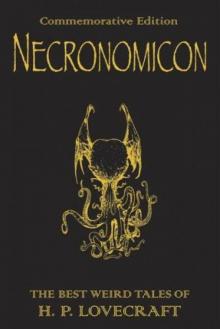 The Definitive H.P. Lovecraft: 67 Tales Of Horror In One Volume
The Definitive H.P. Lovecraft: 67 Tales Of Horror In One Volume The Complete Works of H.P. Lovecraft
The Complete Works of H.P. Lovecraft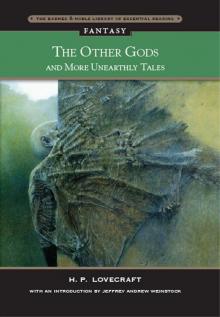 Other Gods and More Unearthly Tales
Other Gods and More Unearthly Tales Lovecraft's Fiction Volume I, 1905-1925
Lovecraft's Fiction Volume I, 1905-1925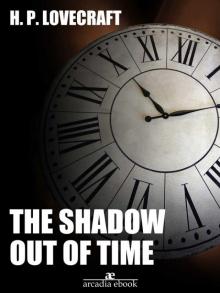 The Shadow Out of Time
The Shadow Out of Time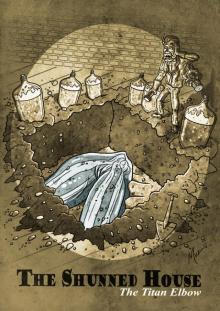 The Shunned House
The Shunned House Lovecraft's Fiction Volume II, 1926-1928
Lovecraft's Fiction Volume II, 1926-1928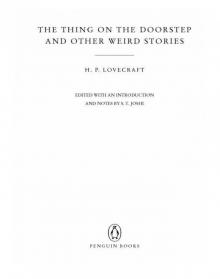 The Thing on the Doorstep and Other Weird Stories
The Thing on the Doorstep and Other Weird Stories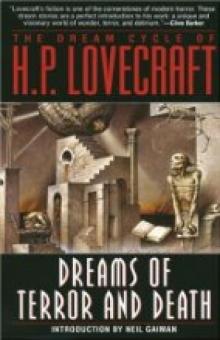 Dream Cycle of H. P. Lovecraft: Dreams of Terror and Death
Dream Cycle of H. P. Lovecraft: Dreams of Terror and Death Great Tales of Horror
Great Tales of Horror Shadows of Death
Shadows of Death Delphi Complete Works of H. P. Lovecraft (Illustrated)
Delphi Complete Works of H. P. Lovecraft (Illustrated) Waking Up Screaming: Haunting Tales of Terror
Waking Up Screaming: Haunting Tales of Terror H.P. Lovecraft Goes to the Movies
H.P. Lovecraft Goes to the Movies The Road to Madness
The Road to Madness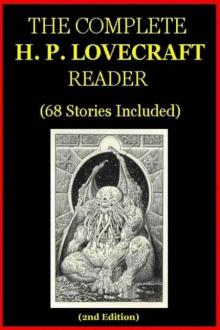 The Complete H.P. Lovecraft Reader (68 Stories)
The Complete H.P. Lovecraft Reader (68 Stories)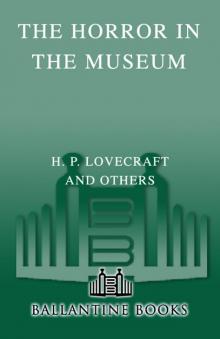 The Horror in the Museum
The Horror in the Museum Collected Fiction Volume 1 (1905-1925): A Variorum Edition
Collected Fiction Volume 1 (1905-1925): A Variorum Edition Lovecrafts_Fiction, vol.I_1905-1925
Lovecrafts_Fiction, vol.I_1905-1925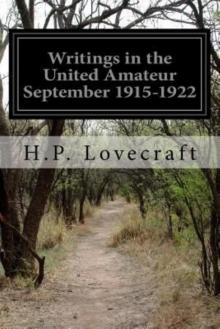 Writings in the United Amateur, 1915-1922
Writings in the United Amateur, 1915-1922 H.P. Lovecraft: The Complete Works
H.P. Lovecraft: The Complete Works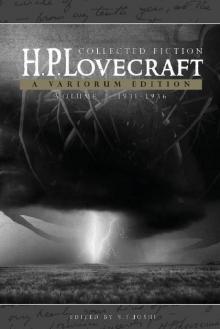 Collected Fiction Volume 3 (1931-1936): A Variorum Edition
Collected Fiction Volume 3 (1931-1936): A Variorum Edition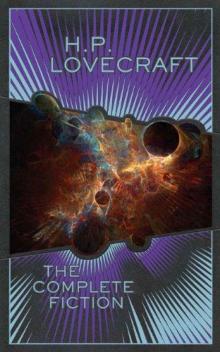 H.P. Lovecraft: The Complete Fiction
H.P. Lovecraft: The Complete Fiction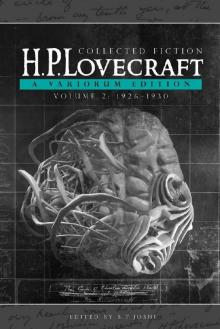 Collected Fiction Volume 2 (1926-1930): A Variorum Edition
Collected Fiction Volume 2 (1926-1930): A Variorum Edition Yog Sothothery - The Definitive H.P. Lovecraft Anthology
Yog Sothothery - The Definitive H.P. Lovecraft Anthology The Complete H.P. Lovecraft Collection (Xist Classics)
The Complete H.P. Lovecraft Collection (Xist Classics)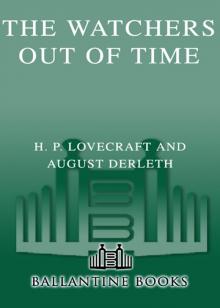 The Watchers Out of Time
The Watchers Out of Time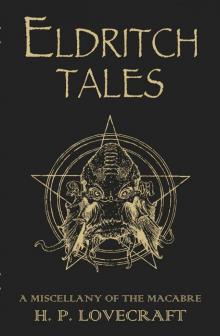 Eldritch Tales
Eldritch Tales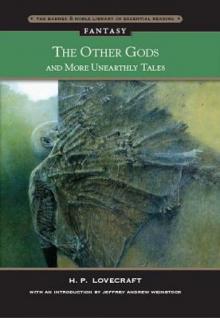 The Other Gods And More Unearthly Tales
The Other Gods And More Unearthly Tales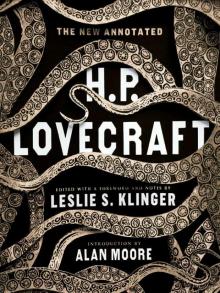 The New Annotated H. P. Lovecraft
The New Annotated H. P. Lovecraft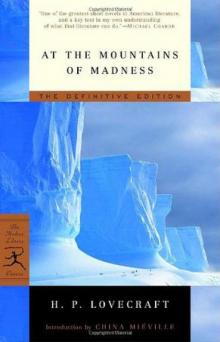 At the mountains of madness
At the mountains of madness Bloodcurdling Tales of Horror and the Macabre
Bloodcurdling Tales of Horror and the Macabre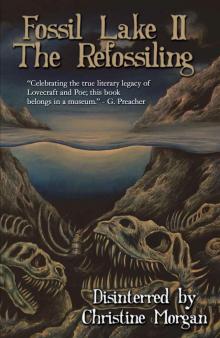 Fossil Lake II: The Refossiling
Fossil Lake II: The Refossiling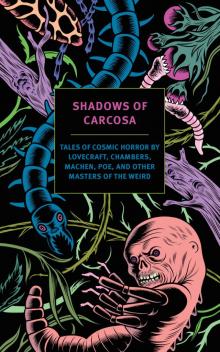 Shadows of Carcosa: Tales of Cosmic Horror by Lovecraft, Chambers, Machen, Poe, and Other Masters of the Weird
Shadows of Carcosa: Tales of Cosmic Horror by Lovecraft, Chambers, Machen, Poe, and Other Masters of the Weird H. P. Lovecraft
H. P. Lovecraft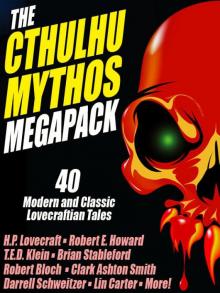 The Cthulhu Mythos Megapack
The Cthulhu Mythos Megapack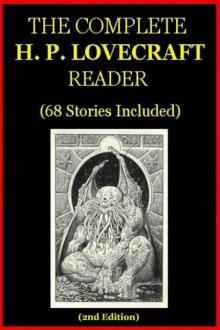 The Complete H. P. Lovecraft Reader (2nd Edition)
The Complete H. P. Lovecraft Reader (2nd Edition)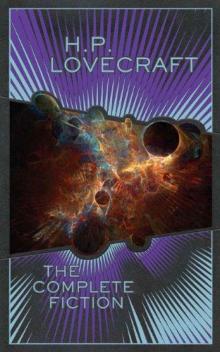 The Complete Fiction
The Complete Fiction Waking Up Screaming
Waking Up Screaming Transition of H. P. Lovecraft
Transition of H. P. Lovecraft![[1935] The Shadow Out of Time Read online](http://i1.bookreadfree.com/i2/04/12/1935_the_shadow_out_of_time_preview.jpg) [1935] The Shadow Out of Time
[1935] The Shadow Out of Time The Horror Megapack
The Horror Megapack